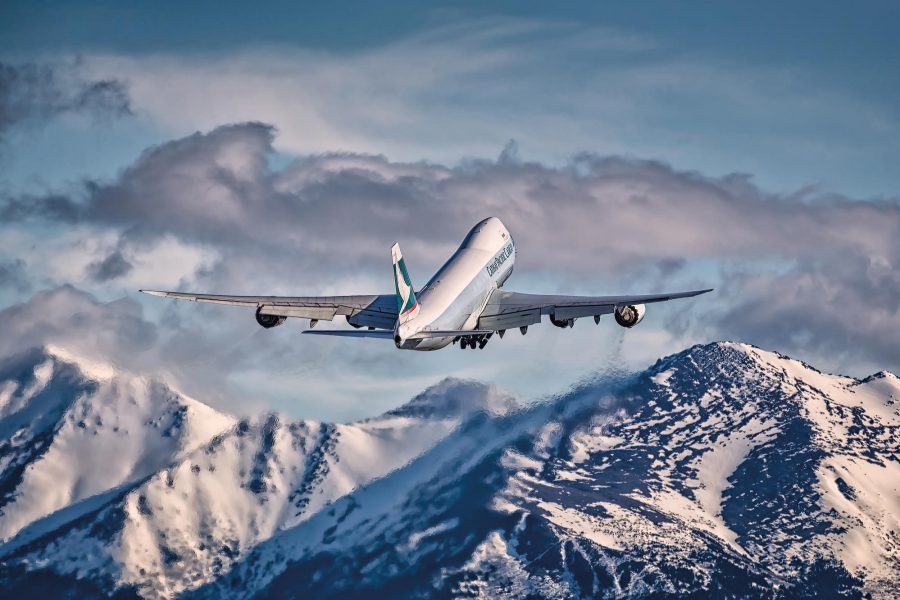Calling at: Anchorage

One of Cathay Pacific’s busiest long-haul ports is one that regular passengers can’t fly to. Yet, it is ideally located and a vital cog in the airline’s operation, handling around 70 aircraft each week come sun, rain – and snow.
That port is Anchorage, a coastal southern Alaskan city, which is served by Cathay Pacific’s fleet of 20 Boeing 747 freighters. The transpacific sky between the Americas and Asia is a vital artery of global commerce. While there is cargo under your feet on your flight today, the ‘belly’ holds of passenger aircraft alone do not offer the capacity to satisfy the demands for global cargo shipments. That includes everything from fresh fruit and seafood to computer components, the latest fashion, live animals and life-saving medicine – plus everything we buy online and expect to be delivered promptly.
Cathay Pacific Cargo operates a continental American freighter network that includes major hubs in Canada and the US, some served by passenger flights, but also ports that aren’t, such as Dallas, Miami and Guadalajara in Mexico. But why Anchorage?
"We could fly our aircraft from the Americas to Hong Kong non-stop but it’s a long way and with the fuel required we wouldn’t be able to carry the full payload," explains Fred Ruggiero, vice-president cargo Americas.
At Ted Stevens Anchorage International Airport, a small Cathay team manages what is in simple terms a pit-stop for freighters, much like the "splash and dash" refuelling in an F1 race, with aircraft stopping at an open area of the ramp so that they can leave under their own power rather than being pushed back. The stops here are measured in minutes – ideally no more than 60, as Alaska cargo manager Kevin Miller explains.
"It’s more than kicking the tyres and checking the oil," says Miller. "We do a walk around the cargo deck to make sure nothing has shifted, check the paperwork, give water to animals, and engineers carry out a basic service. The flight crew swaps out here, too."
In the almost perpetual daylight of a pleasant northern summer, that’s fine. But in winter, snow falls and winds howl on days of almost perpetual darkness. Snow also freezes fast on aircraft wings because of the ultra-cold fuel in the tanks. That requires de-icing, but without adding time to the tight schedule. And snow on the runway starts to affect the take-off performance of the aircraft. When the weather is very bad that means offloading and redistributing some cargo onto other flights to keep weight down and the operation safe. As Miller says, "It keeps things interesting."
More inspiration
- China – the Chinese Mainland, Hong Kong SAR, Macao SAR and Taiwan Region
- Hong Kong SAR - English
- Chinese Mainland (China) - English
- Taiwan, China - English
- 香港特別行政區 - 繁體中文
- 中国內地 - 简体中文
- 中國台灣 - 繁體中文
- Africa
- South Africa - English
- Asia
- Bangladesh - English
- Korea - English
- Singapore - English
- Cambodia - English
- 한국 - 한국어
- Sri Lanka - English
- India - English
- Malaysia - English
- Thailand - English
- Indonesia - English
- Maldives - English
- ประเทศไทย - ภาษาไทย
- Indonesia - Bahasa Indonesia
- Myanmar - English
- Vietnam - English
- Japan - English
- Nepal - English
- Việt Nam - tiếng Việt
- 日本 - 日本語
- Philippines - English
- Australasia
- Australia - English
- New Zealand - English